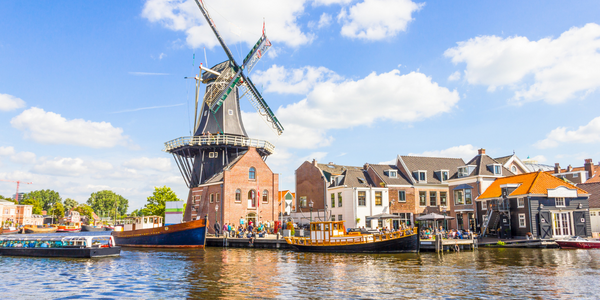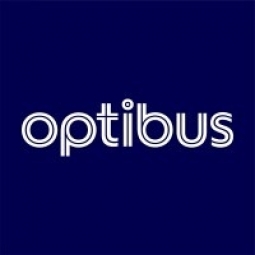Technology Category
- Functional Applications - Fleet Management Systems (FMS)
- Platform as a Service (PaaS) - Application Development Platforms
Applicable Industries
- Cities & Municipalities
- Transportation
Applicable Functions
- Logistics & Transportation
Use Cases
- Fleet Management
- Smart Campus
Services
- System Integration
- Training
About The Customer
The University of Cape Town’s private bus shuttle service, known as the UCT Shuttle, provides transportation services across the university campus, free of charge, to 29,000 students and 5,000 staff members. The UCT Shuttle is essential for students and staff to arrive on time at their lecture halls and offices, which are located on a private campus on the steep face of Cape Town’s iconic Table Mountain and not served by the city’s public transportation network. UCT Shuttle transports riders between the campus and greater Cape Town at the base of the mountain, where riders live, work, and play. With a fleet of 27 buses and 60 drivers, the UCT Shuttle operates 19 routes that run every day of the week (Sunday to Saturday) during the term, with special timetables for vacation and exam periods.
The Challenge
The University of Cape Town (UCT) Shuttle, a private bus service providing transportation to 29,000 students and 5,000 staff members, was struggling with manual planning and scheduling processes. The shuttle service, which operates 19 routes with a fleet of 27 buses and 60 drivers, was essential for the university community to commute between the campus and greater Cape Town. However, the manual processes were tedious, time-consuming, and prone to human error. The UCT Shuttle team, despite their expertise in traditional manual processes, lacked experience in digital planning and scheduling systems. They sought a digital, automated solution to streamline their operations and improve efficiency.
The Solution
In consultation with GoMetro, the technology arm of the GoAscendal global joint venture, UCT Shuttle selected Optibus’ Planning and Scheduling software platform. This cloud-native, AI-powered software platform transitioned the UCT Shuttle from manual to digital processes, resulting in faster timetable changes and better organization. The platform's intuitive, easy-to-use interface allowed the UCT Shuttle team to quickly adapt to the new system. Furthermore, Optibus’ cloud-native, digital platform enabled GoMetro to continue training operators remotely during the COVID-19 pandemic. On September 1, 2020, GoMetro and UCT Shuttle launched a real-time fleet management system, GoMetro Fleet, with 30 UCT Shuttle vehicles, and a passenger information and communication mobile app. The Optibus tool was instrumental in digitizing the UCT Shuttle’s timetables and schedules into General Transit Feed Specification (GTFS) format, significantly reducing the turnaround time in GTFS creation.
Operational Impact
Quantitative Benefit

Case Study missing?
Start adding your own!
Register with your work email and create a new case study profile for your business.
Related Case Studies.

Case Study
Turning A Stadium Into A Smart Building
Honeywell created what it called the “intelligent system” for the National Stadium in Beijing, China, turning the venue for the opening and closing events at the 2008 Summer Olympics into a “smart building.” Designed by highly controversial artist Ai Weiwei, the “Bird’s Nest” remains one of the most impressive feats of stadium architecture in the world. The 250,000 square meter structure housed more than 100,000 athletes and spectators at a time. To accommodate such capacity, China turned to Honeywell’s EBI Integrated Building Management System to create an integrated “intelligent system” for improved building security, safety and energy efficiency.
.png)
Case Study
Smart Street Light Network (Copenhagen)
Key stakeholders are taking a comprehensive approach to rethinking smart city innovation. City leaders have collaborated through partnerships involving government, research institutions and solution providers. The Copenhagen Solutions Lab is one of the leading organizations at the forefront of this movement. By bringing together manufacturers with municipal buyers, the Copenhagen Solutions Lab has catalyzed the development and deployment of next-generation smart city innovations. Copenhagen is leveraging this unique approach to accelerate the implementation of smart city solutions. One of the primary focus areas is LED street lighting.

Case Study
Airport SCADA Systems Improve Service Levels
Modern airports are one of the busiest environments on Earth and rely on process automation equipment to ensure service operators achieve their KPIs. Increasingly airport SCADA systems are being used to control all aspects of the operation and associated facilities. This is because unplanned system downtime can cost dearly, both in terms of reduced revenues and the associated loss of customer satisfaction due to inevitable travel inconvenience and disruption.

Case Study
IoT-based Fleet Intelligence Innovation
Speed to market is precious for DRVR, a rapidly growing start-up company. With a business model dependent on reliable mobile data, managers were spending their lives trying to negotiate data roaming deals with mobile network operators in different countries. And, even then, service quality was a constant concern.

Case Study
Buoy Status Monitoring with LoRa
The Netherlands are well-known for their inland waterways, canals, sluices and of course port activities. The Dutch Ministry of Infrastructure indicates that there are thousands of buoys and fixed items in and near water environments that would profit from IoT monitoring. One of the problems with buoys for example, is that they get hit by ships and the anchor cable breaks. Without connectivity, it takes quite some time to find out that something has happened with that buoy. Not to mention the costs of renting a boat to go to the buoy to fix it. Another important issue, is that there is no real-time monitoring of the buoys at this moment. Only by physically visiting the object on the water, one gains insight in its status.








